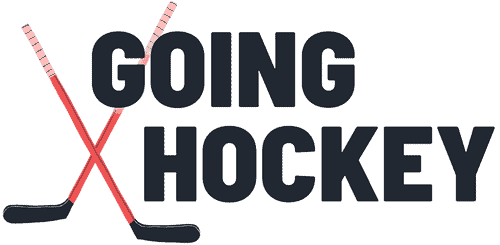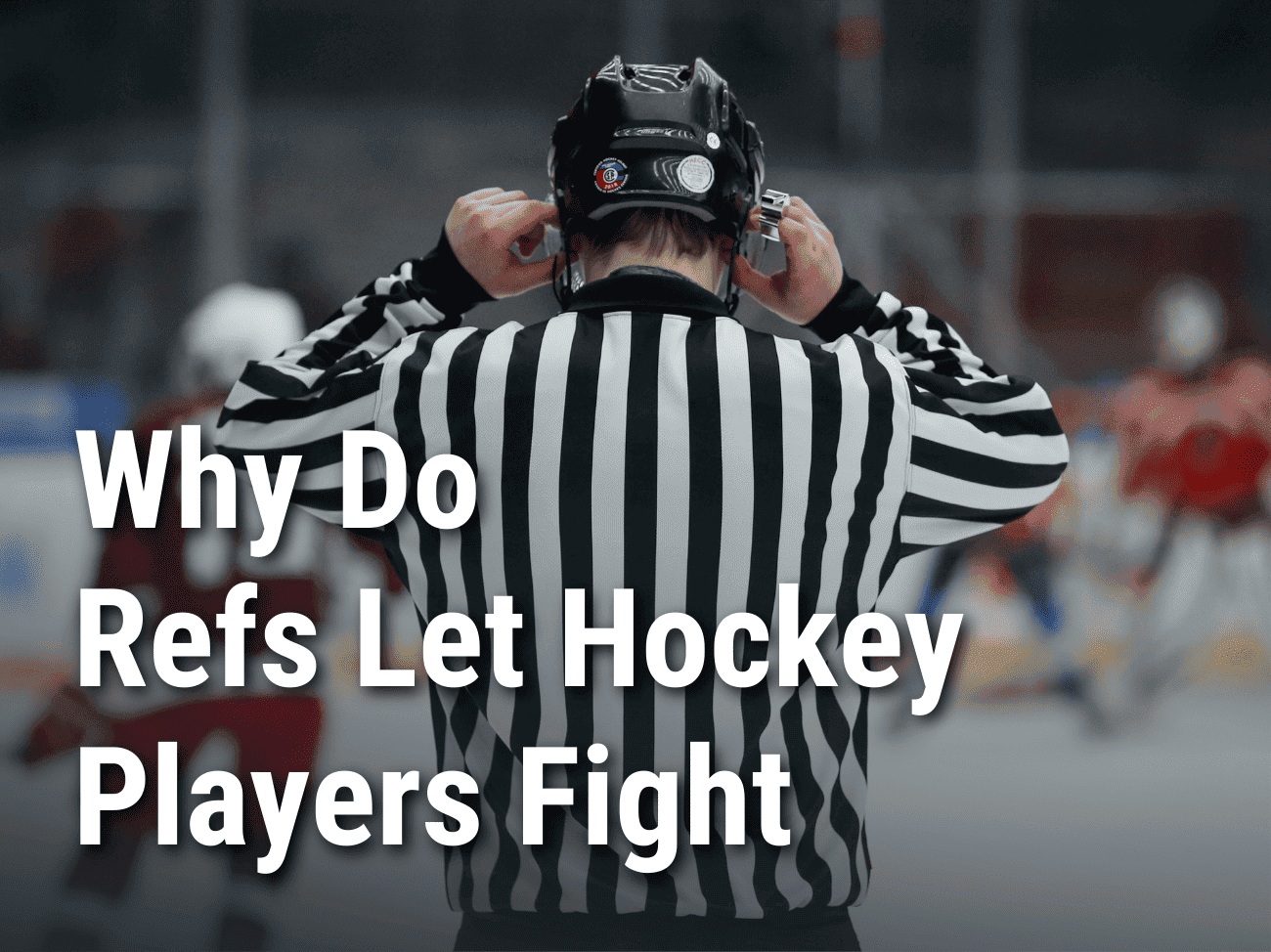Hockey, known for its high-speed action and physicality, has a unique and often debated aspect that sets it apart from other sports: player fights. While fights in hockey have become an ingrained part of the game’s culture, one question remains at the center of the ongoing debate:
Why do referees allow hockey players to fight?
2 reasons why hockey refs let players fight:
- Personal Safety
- Tradition
Simply put, breaking up a fight between two, 200lbs+ men swinging wildly at each other can be dangerous. And not letting players fight, can be seen as “sacrilegious”, or antithetical, to the cultural traditions of the sport.
Why Do Refs Let Hockey Players Fight?
In hockey, fighting has historically been allowed to some extent, although the rules and attitudes surrounding fighting have evolved over time.

The reasons why refs let hockey players fight haven’t changed much throughout hockey history. Refs let hockey players fight for 2 reasons: personal safety and hockey tradition.
Refs Let Hockey Players Fight For Reasons Of Safety
It can be dangerous for referees to try to break up a fight in hockey. When players are engaged in a fight, they are often in an agitated state and may not have complete control over their actions. The players involved may throw punches, grab each other, or fall to the ice, increasing the risk of injury.
Referees who intervene in a fight put themselves at risk of getting caught in the middle of the altercation or being unintentionally struck by a player’s fists or equipment. They may also be at risk of slipping or falling on the ice while trying to separate the players.

To mitigate the risks, referees are trained to approach fights cautiously and assess the situation before attempting to intervene. They often wait for an opportune moment when the players are in a position that allows for safer separation. Referees also receive training on how to protect themselves during fights and are typically equipped with protective gear, such as helmets and visors.
However, it’s important to note that the primary responsibility of the referees is to maintain the safety of the players and enforce the rules of the game. While they may try to break up fights, their priority is to ensure the well-being of everyone involved. In some cases, referees may choose to let the players exhaust themselves or separate on their own before stepping in to avoid further escalating the situation or risking injury to themselves.
Refs Let Hockey Players Fight Because Of Tradition
Fighting has long been a part of hockey tradition, particularly in North America. It has an extensive history and is often associated with the rough and physical nature of the sport.
While fighting is not officially a part of the game and is against the rules, it has been widely accepted and even celebrated to some extent in the past. Fights are very entertaining. But more than that, many fans and players consider it as a way to police the game, protect teammates, or change the momentum of a match.

As a result, breaking up a fight before its starts can be seen as antithetical to the spirit and culture of hockey. Refs that stop fights from happening will usually be booed aggressively by the fans and take a lot of lip from the players as well.
If that weren’t reason enough, most ref’s efforts to stop fights will be in vain anyways.
If two players want to engage in a fight, there is not much that a ref can do to prevent it from happening. Even if refs are able to stop one altercation, the players will simply fight at some other point in the game.
Simply put, there is very little upside to stopping fights.
However, there are upsides if refs let hockey players fight. These include:
- Entertaining the fans
- Letting players vent frustrations
- Honoring the cultural traditions of the sport
Refs Don’t Break Up Fights – Linesmen Do
Technically, refs don’t break up fights in hockey, that’s the linesmen’s job.
In hockey, there are typically two types of officials on the ice: referees and linesmen. While both play crucial roles in officiating the game, their responsibilities and areas of focus differ. Here’s an overview of the difference between linesmen and referees:

- Linesmen
- Linesmen, also known as assistant referees, work in pairs and wear vertical black and white striped jerseys. They are the officials who are not wearing the “orange armbands.” They primarily focus on specific aspects of the game and assist the referees. Here’s what linesmen are responsible for:
- Breaking Up Fights
- Linesmen play a role in separating players during fights and ensuring the safety of those involved. They work in tandem with the referees to diffuse altercations and restore order on the ice.
- Faceoffs
- Linesmen are responsible for dropping the puck at the beginning of each period, after goals, and during faceoffs. They ensure that players from each team are properly positioned and adhere to faceoff rules.
- Offside and Icing Calls
- Linesmen determine if a play is offside or if an icing violation has occurred. They use their positioning and knowledge of the rules to make these calls. Offside occurs when an attacking player precedes the puck into the offensive zone, while icing happens when a team shoots the puck from their own side of the center line and it crosses the opponent’s goal line without being touched.
- Line Changes
- Linesmen monitor player substitutions and line changes to ensure they are conducted legally and within the rules.
- Breaking Up Fights
- Linesmen, also known as assistant referees, work in pairs and wear vertical black and white striped jerseys. They are the officials who are not wearing the “orange armbands.” They primarily focus on specific aspects of the game and assist the referees. Here’s what linesmen are responsible for:

- Referees
- Referees are the primary officials in a hockey game. They wear vertical black and white striped jerseys, with orange armbands. They are responsible for enforcing the rules and maintaining overall control of the game. Here are some key aspects of their role:
- Rule Enforcement
- Referees have the authority to call penalties for rule infractions, such as tripping, slashing, or high-sticking. They make judgment calls on various aspects of the game, including goals, offside situations, and goalie interference. Referees are responsible for ensuring fair play and maintaining player safety.
- Game Management
- Referees have the final decision-making authority on any disputes or conflicts that may arise during the game. They handle player confrontations, disciplinary actions, and other on-ice incidents. Referees also communicate with the off-ice officials, such as the video review officials, to ensure proper decisions are made.
- Rule Enforcement
- Referees are the primary officials in a hockey game. They wear vertical black and white striped jerseys, with orange armbands. They are responsible for enforcing the rules and maintaining overall control of the game. Here are some key aspects of their role:
While referees have the ultimate authority in making decisions and enforcing the rules, linesmen play a critical role in specific areas of the game, such as faceoffs, offside and icing calls, line changes, and maintaining order during fights. Their collaboration helps ensure the smooth and fair progress of the game.


Leave a Reply